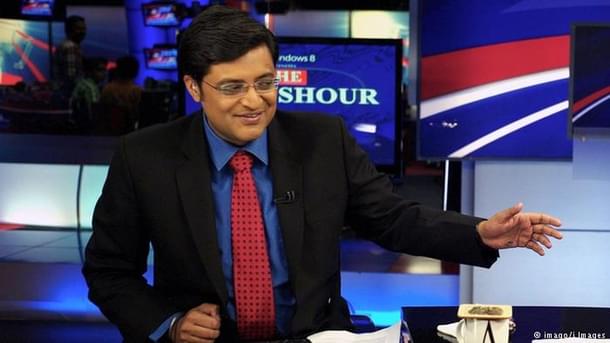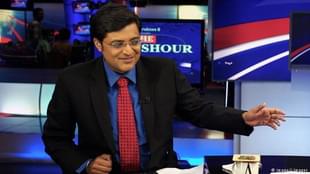Politics
What Does The Nation Want To Know?
Gautam Mukherjee
Sep 11, 2015, 06:36 PM | Updated Feb 11, 2016, 09:15 AM IST
Save & read from anywhere!
Bookmark stories for easy access on any device or the Swarajya app.


The news media could well be the beacon and lighthouse for the future of India. But why is it they have descended into unthinking demagoguery?
Today, 14 years after 9/11, the most horrific attack of terrorism on US soil, rivalled perhaps only by the Japanese attack of Pearl Harbour that brought America into WWII, there is always room to revaluate the roles and limitations of the media. Coincidentally, India too, has been attacked repeatedly by terrorists over the years, in 1993 certainly, and again on our own 26/11. The purposefulness of the media in India, as an instrument that can change the attitudes of people, should perhaps come into focus.
A media circus can be most amusing, but perhaps the ringmasters might yet realise, as a line in the US political drama Newsroom points out, that they, more than many others, even the mass contact politicians and our elected representatives, hold the power to ‘let the wish become the father of the thought’.
Long ago, Bollywood was identified as a ‘nation builder’. But the jokes about Manoj Kumar’s mannerisms and interminable roles as socialism’s long suffering but stoic/heroic ‘Bharat’, that got his films routine entertainment tax exemptions, were seen to be long-gone passé. Certainly, by the time the Farah Khan directed SRK/Deepika Padukone hit Om Shanti Om rolled around. Today’s Bollywood mostly celebrates the good life, as well it might. Quality theatre, such as it is, in Marathi and Bengali, mostly dwells on Marxist style ‘injustice’.
Quentin Tarantino was recently quoted, in a leading Indian English language newspaper that sprinkles in Hollywood snippets for our reading pleasure. This, and printing colour pictures of good looking Hollywood actors, interspersed with the glamorous from Bollywood, Tollywood, and Indian TVLand, what they’re saying, quotes from directors/producers; is now commonplace.
The film magazine has been married into the newspaper along with a good deal of promotional matter. And this, in most mainstream English and language newspapers, because apparently, people like it. The reading public must like basking in the stardust, as much in the mofussil chai shops, reached by the high circulation vernacular broadsheets, as in the understandably internationalised, and much more frenetic metros.
Well embedded amongst all the routine streaming into our consciousness, Tarantino was recently quoted as saying he didn’t much care for some of the wildly popular fantasy TV serials that he names and shames, even though they’ve been running into several seasons. But he held he did like The Aaron Sorkin-written The Newsroom on HBO, starring Jeff Daniels.
The implication was that it was instructive, and not just mindless entertainment. Which means Tarantino probably thinks his stylishly murderous Kill Bill films, and his mad Nazi caper, Inglorious Basterds, starring Brad Pitt, were largely educational.
Or perhaps Tarantino’s tastes in entertainment do not support, and cannot abide, fantasia. Taking in the said masterfully produced 25-episode US TV ‘political drama’, parlayed over three seasons, it is striking how the Newsroom ‘cable-news network’ storyline, is both relevant to us, and most evocative.
It is all about reporting the doubly verified news, views, and current goings on, nightly, via a charismatic and TRP generating anchor, paid in millions of dollars. The fictional anchor, Will McAvoy, is supported by a team of brilliant, media qualified, and passionate TV editors, technicians, analysts, reporters and popularity monitors.
It reminds you, not only of a TV news phenomenon, the distance India has travelled, grown out of the sorry DD days, and its I&B ministry monitored feed. And then winds of change, under Bhaskar Ghosh, aided by a young and bushy-tailed private sector economist called Prannoy Roy. And then, hey presto, the Indian satellite TV revolution, Star TV, with talk of uncontrollable, uncensorable, real-time South Asia and Middle East covering ‘footprints’ .
It shook our politicians and babus, but think what it did to the Bedouin monarchies to the West, and the uniforms to the North and North West of us?
But Newsroom reminds you also, of someone and something closer to today and home. Not just the form of it, but also the idiom, the sensibility and the content.
I am referring, of course, to our star desi real-life spearhead and equivalent – the ‘fearless’ Arnab Goswami, articulate, researched, Elvis style side-burned. He is slickly suited, booted and red-tied, like McAvoy, but nightly, on Times Now.
The man’s dominance of the genre has turned him into a popular culture icon, and all his competitors into reluctant imitators, but only to the extent/ limits of their wits, lung-power, and aggression. Goswami has parlayed his entertaining style, that one might describe as the James Brown of English language live news programming, into cult status.
But at the same time, the viewing experience now is a composite of the styles and content delivered by all the other ‘News Channels’ including India Today, CNN-IBN, NewsX, NDTV, ABP, Aaj Tak and others; along with the so-called ‘Business Channels’- ETNow, Bloomberg, CNBC-TV18, NDTV Profit, and so on.
Nothing like this dramatic version of news and views presentation has been seen and heard before on our broadcasts. Not till Goswami grew into his stride in the field. There are a number of other stars in the firmament, of course – the pioneering Prannoy Roy with his quiet and affable style at the top of the pyramid, and his creations grown into media stars in their own right- Rajdeep Sardesai, Barkha Dutt, and indeed Goswami himself, who was also incubated in the NDTV stable.
Even a seasoned print editor/ reporter like Shekhar Gupta has made himself known on TV thanks to Roy and his media channels. But, none of the others have managed to turn their almost nightly presentations into the high octane performance that Arnab brings to town.
However, if the purpose of TV News in English, and the multiple Indian languages alongside, is to inform, influence, even educate the public, does Times Now, and all its competitors, struggling to differentiate themselves, really make the cut?
The fictional Newsroom, like the fictional White House drama The West Wing, also created by Sorkin, with similarly intelligent verbal repartee being its hallmark, clearly seeks to point out the deeper purposes. This, of quality journalism, and governance, as understood by the script writers and director/producers of the respective hit TV series.
They seek to explore the meaning of the American constitution, the belief systems the founding fathers wanted to uphold, its place in the thinking of the modern nation, grown into the richest and most powerful nation on earth, but in an increasingly complicated world. It dwells again and again on the honourable personal choices one must make as a matter of integrity, honesty, and courage. This, in order not to sink into the morass, the wilful descent, into becoming second-rate.
For India, an emerging nation of the greatest promise, one that has today been identified as the only major economy ‘bright spot’ in an economically troubled world; is the media helping in the shaping of the exalted aspects of its unfolding narrative? Is there an effort, sufficient, by way of thoughtful analysis and responsible critique of the big directional issues?
Or, is it readily and willingly descended, enmeshed, instead, in the exposition of the tawdry spectacle, the bazaar tamasha? And in the business of agitating and exploiting the prejudices and dogmas of our lesser selves.After all, there too, in the pits, there is excitement, the energy afforded by the anarchic and irresponsible freedom, fuelled by the workings of a noisy and disorderly democracy with scant accountability to backstop it.
Quickly, in the context, perspective, and flow of current affairs, India has emerged as the least beleaguered survivor. It is the cleanest ‘dirty shirt’ going forward, out of the now battered five nation BRICS. It was, in hindsight, perhaps a hasty coinage by a Goldman Sachs staffer. It has already grown out-of-date, even though BRICS was named not much more than a decade ago.
It is no longer Brazil, Russia, China, South Africa or even Indonesia, once thought fit, just two-three years ago, to become the I of BRICS, instead of India – that are the fast growth engines. The 21st century has been snatched away from their once promising hands, though it is early days yet.
But today, does real life TV journalism, as opposed to the idealisation in a drama series like Newsroom; in CNN, Fox, ABN, ABC and hundreds more, networked across the United States, deliver to the highest standards of journalism? Do they invariably report and analyse news to appeal to the civilised human being and his higher-self?
Too often, here in India, as well as there in the US, with free and unfettered media, the temptation to sensationalise, capture the ‘breaking news’, distort, inflame, promote a line of propaganda and be partisan, is much more in evidence and vogue.
The broadcast, the print and digital media, realise, despite the growing sophistication and freedom of the Internet, is still a potent weapon. It is capable of swaying public opinion and affecting strategic, political, sociological, and economic outcomes.
The powerful fifth estate then, could well be the beacon and lighthouse for the future of India. Arnab Goswami and his imitators opinionate and editorialise all the time anyway. So why not do it for the greater good, to promote the best outcomes for an evolving India?
Gautam Mukherjee is a political commentator whose columns figure regularly in different right-of-centre media outlets




